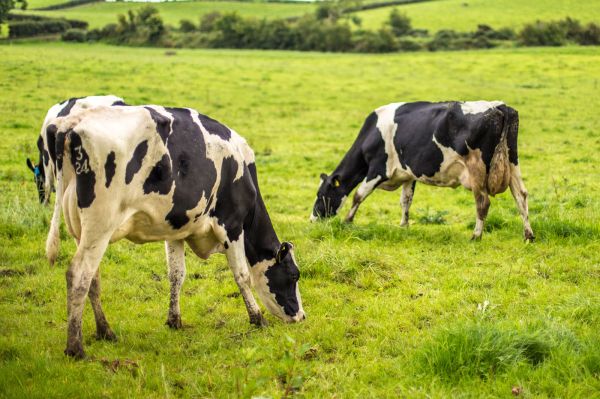
Ciaran Fitzgerald
Agri-food economist
Innovation investment constraints

Any thriving industry needs a balance between in-company investment in research (based on customer feedback) and external support for the sector from the State, which can deliver longer-term, strategic, research-based outcomes. Many of the new sustainability technologies and practices in Teagasc’s Marginal Abatement Cost Curve (MACC), which identifies the most cost-effective pathway to reduce greenhouse gas (GHG) emissions in the agricultural and land-use sectors have come from a robust, well-functioning research and knowledge-transfer system, mainly developed and disseminated by Teagasc. There is a mutual benefit between public and private research and development (R&D), and neither is likely to thrive without the other. Industry benefits from public research that has the capability of delivering macro breakthrough technologies over the longer term, while universities and technological institutes need the close-to-customer feedback from agri-food companies that guide the longer-term direction of R&D.
Undermining investment
There is, therefore, huge concern that the current policy-driven moves to constrain Irish agricultural output will undermine future much-needed investment in R&D, at first in industry itself, because of imposed costs and regulatory constraints, and then, inevitably, in the public R&D sphere.
Agriculture and food production, from farm to fork, depend on continuously delivering against quite a number of fundamental metrics. So, while there is a clear, obsessive focus currently on environmental and climate impacts of food production, to survive and prosper, farmers and food manufacturers must also continue to deliver on a range of other fundamental parameters, not least cost competitiveness and innovation.
Moreover, the unrelenting response over the last 20 years or more (allegedly on behalf of consumers), from grocery retailers, supermarkets and discounters alike, to ever increasing economic and regulatory costs of production, has been to drive down the producer margin again and again. In response to complaints from producers that this strategy is unsustainable, the mantra from their purchasers has been that they will source product elsewhere if producers cannot or will not reduce their margins.
So cost recovery through increased prices (notwithstanding wishful commentary from EU spokespeople and environmentalists, that EU and global consumers will pay for sustainable food production) is not realistic. In the case of food pricing, past performance is very much an indicator of future outcomes.
New quota system
Irish dairy, in particular, is in the process of being ‘re-quota-fied’ either through sectoral emissions budget constraints or change to/loss of the Nitrates Derogation, or both. This means that, even based on planning for success in delivering improved water quality outcomes and retaining the derogation at the 220kg level, Irish milk production/dairy output will struggle to get to the nine billion litres level achieved in 2022.
A purely policy-driven production cap/quota is constraining output and economies of scale. In addition, that same policy is requiring swift and costly decarbonisation investment to be borne by milk producers and processors. Dairy-processing decarbonisation, as currently envisaged, equates to an additional one billion litres in increased unrecoverable costs onto a politically constrained production capability.
There are additional cost burdens, including the change from relatively competitive natural gas to green electricity, that are likely to mean higher relative energy costs, in particular. It is important, therefore, to reflect that dairy output growth from 2015, while it required significant capital expenditure and extra energy usage and cost, contemporaneously delivered the increased throughput that paid back the investment. It also delivered an additional 3,000 direct and indirect jobs, contributing an annual €5bn to the Irish economy and exporting €6bn of dairy products globally by 2023. Similarly, dairy growth and economies of scale made increased investment in R&D economically viable.
Processing cost constraints
The new, (purely policy-based), paradigm for Irish dairy means that increased costs - both capital expenditure and energy/operating expenditure costs - will now have to be absorbed by a constrained processing throughput. Investment in much-needed R&D faces the same constraint. And, while other sectors in the Irish economy may face high capital expenditure decarbonisation costs, future production levels in these sectors are not constrained. So, unlike Irish agriculture, economies of scale and selling power can deliver some cost recovery.
When quotas were introduced at EU level in 1984, the latent growth capability in Irish dairy was met by companies such as Kerry, Glanbia and the Irish Dairy Board investing in growth, innovation and expansion overseas, mainly in the US. Growth and innovation were achieved, but not in Ireland.
Moreover, the previous quota system involved internal price supports and export subsidies to the tune of €5/6bn to deliver price stability as a quid pro quo for production limits, whereas the abolition of quotas in 2015 was predicated on the dilution of price supports in the EU dairy sector. Price supports are not likely to return, but an approach to decarbonisation from farm to fork – similar to the billions committed in the US Inflation Act of last year or the German, Dutch and Danish supports for their key industries – is feasible under EU state aid rules. Not only that, but it is essential if we are to manage successfully the huge competitive challenges being imposed on the agri-food sector, hereby sustaining the economic and social contribution of this sector to the national economy.




